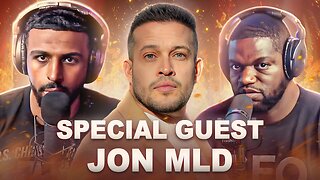Premium Only Content

Nature | Earth | Earth Rotating | Space | Science | Mother Nature
Earth's rotation or Earth's spin is the rotation of planet Earth around its own axis, as well as changes in the orientation of the rotation axis in space. Earth rotates eastward, in prograde motion. As viewed from the northern polar star Polaris, Earth turns counterclockwise.
The North Pole, also known as the Geographic North Pole or Terrestrial North Pole, is the point in the Northern Hemisphere where Earth's axis of rotation meets its surface. This point is distinct from Earth's North Magnetic Pole. The South Pole is the other point where Earth's axis of rotation intersects its surface, in Antarctica.
Earth rotates once in about 24 hours with respect to the Sun, but once every 23 hours, 56 minutes and 4 seconds with respect to other distant stars (see below). Earth's rotation is slowing slightly with time; thus, a day was shorter in the past. This is due to the tidal effects the Moon has on Earth's rotation. Atomic clocks show that the modern day is longer by about 1.7 milliseconds than a century ago,[1] slowly increasing the rate at which UTC is adjusted by leap seconds. Analysis of historical astronomical records shows a slowing trend; the length of a day increased by about 2.3 milliseconds per century since the 8th century BCE.
Scientists reported that in 2020 Earth had started spinning faster, after consistently spinning slower than 86,400 seconds per day in the decades before. On June 29, 2022, Earth's spin was completed in 1.59 milliseconds under 24 hours, setting a new record.Because of that trend, engineers worldwide are discussing a 'negative leap second' and other possible timekeeping measures.
This increase in speed is thought to be due to various factors, including the complex motion of its molten core, oceans, and atmosphere, the effect of celestial bodies such as the Moon, and possibly climate change, which is causing the ice at Earth's poles to melt. The masses of ice account for the Earth's shape being that of an oblate spheroid, bulging around the equator. When these masses are reduced, the poles rebound from the loss of weight, and Earth becomes more spherical, which has the effect of bringing mass closer to its centre of gravity. Conservation of angular momentum dictates that a mass distributed more closely around its centre of gravity spins faster.
-
 LIVE
LIVE
Drew Hernandez
9 hours agoLGBTQ TERRORIST EXECUTES CATHOLIC KIDS IN MINNEAPOLIS
719 watching -
 2:17:08
2:17:08
FreshandFit
5 hours ago10 Top Red Pills About American Women
37K16 -
 2:10:26
2:10:26
Badlands Media
10 hours agoDevolution Power Hour Ep. 383
49.2K6 -
 3:17:28
3:17:28
TimcastIRL
5 hours agoTrans Shooter Targets Catholic Kids In Mass Shooting, Leftists Reject Prayers | Timcast IRL
210K54 -
 1:31:29
1:31:29
Brandon Gentile
1 day ago25 Year Wall Street INSIDER: $1M Bitcoin Soon Is Just The START
12K -
 LIVE
LIVE
SpartakusLIVE
6 hours ago#1 Birthday Boy Celebrates with MASSIVE and HUGE 4.8-Hour Stream
316 watching -
 55:54
55:54
Man in America
8 hours agoFrom Oil Barons to Pill Pushers: The Rockefeller War on Health w/ Jeff Adam
36.3K3 -
 3:02:18
3:02:18
Barry Cunningham
5 hours agoBREAKING NEWS: PRESIDENT TRUMP THIS INSANITY MUST END NOW!
82.9K151 -
 DVR
DVR
StevieTLIVE
4 hours agoWednesday Warzone Solo HYPE #1 Mullet on Rumble
29.6K -
 5:58
5:58
Mrgunsngear
5 hours ago $2.88 earnedBreaking: The New Republican Party Chairman Is Anti 2nd Amendment
23.2K8